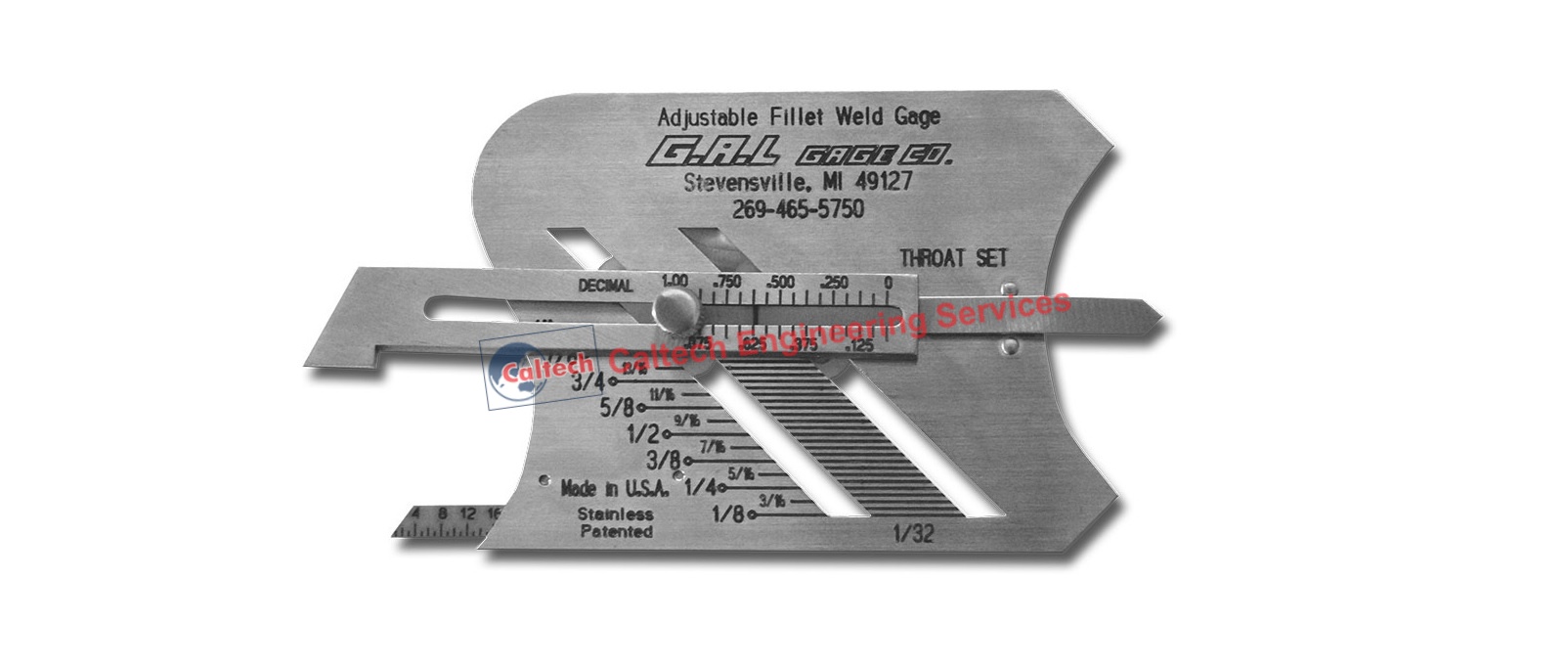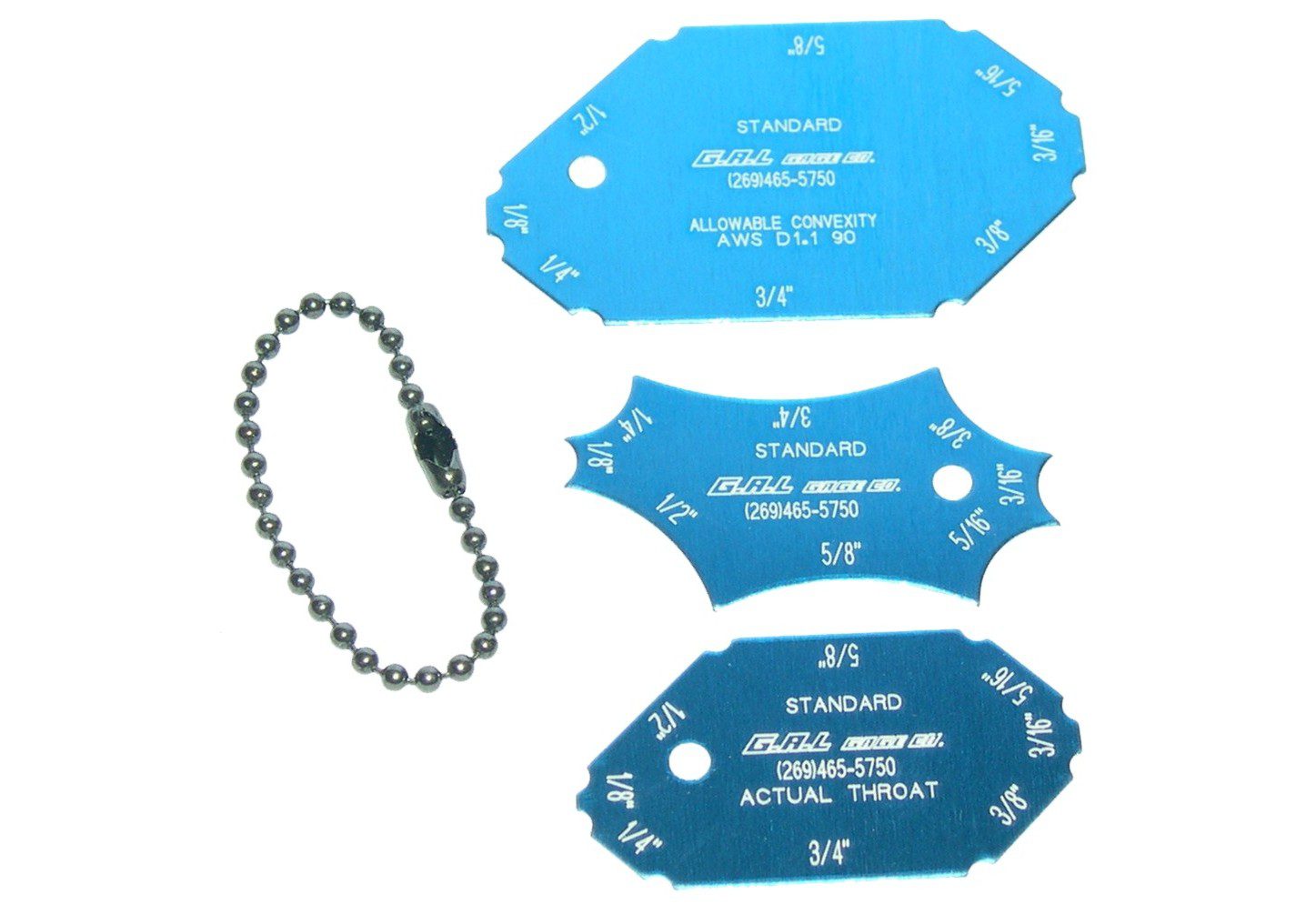Gauge Fillet Weld Explained: From Fundamentals to Advanced Techniques
Wiki Article
The Ultimate Overview to Fillet Weld High Quality Control: Making Sure Strength and Durability in Your Welded Joints
In the world of welding, ensuring the toughness and sturdiness of fillet welds is paramount for the integrity of welded joints. The quality assurance actions executed during the welding process can significantly influence the architectural sturdiness of the final item. From the option of ideal materials to the careful evaluation of welds, each action plays an important function in figuring out the overall high quality of the weld joint. As we get started on this expedition of fillet weld quality control, we will reveal vital variables that affect weld strength, dig into effective assessment methods, and go over strategies for preventing typical weld issues. Keep tuned to uncover exactly how mastering these methods can boost the durability and integrity of your welded joints.Relevance of Fillet Weld Quality Control
Making certain appropriate fillet weld quality control is vital in guaranteeing the structural honesty and durability of welded components in various industries. Fillet welds are typically made use of in architectural steelwork, bridges, pressure vessels, pipes, and other crucial framework where the toughness of the weld is critical to general safety and security and efficiency. Quality assurance actions such as aesthetic examinations, non-destructive screening, and adherence to welding procedures aid recognize prospective issues like lack of blend, incomplete infiltration, damaging, or excessive support.Trick Aspects Impacting Weld Strength
Achieving optimal weld toughness needs mindful factor to consider of numerous vital elements that influence the stability and durability of the welded joint. The first vital aspect appertains joint preparation, which entails cleansing the base metals to get rid of any type of contaminants that can deteriorate the weld. In addition, the fit-up of the joint is important to guarantee correct penetration and fusion of the filler material.The option of the appropriate welding strategy and parameters additionally plays a substantial duty in determining weld strength. Elements such as warm input, traveling speed, and electrode angle can affect the high quality of the weld. Preserving the proper interpass temperature throughout multi-pass welding is crucial to protect against cracking and make sure a solid bond in between the layers.
In addition, the choice of filler product and its compatibility with the base steels is crucial for attaining high weld toughness. Utilizing filler product with the suitable mechanical properties can enhance the total stability of the weld. Post-weld heat treatment and appropriate inspection methods are crucial actions in ensuring the strength and toughness of the bonded joint.
Inspection Techniques for Weld Honesty

An additional essential inspection method is liquid penetrant screening, where a fluid dye is put on the weld surface - Gauge Fillet Weld. The dye seeps right into any kind of surface-breaking issues, making them visible under UV light. This method is efficient for my latest blog post identifying flaws that may not be visible to the naked eye


Ultrasonic screening is likewise widely made use of for checking weld integrity. High-frequency acoustic wave are guided into the weld, and any kind of interruptions in the acoustic wave pattern show potential problems like splits or lack of blend.
These inspection techniques play a vital function in ensuring the high quality and reliability of welds, eventually adding to the overall toughness and sturdiness of bonded joints in industrial setups.
Protecting Against Typical Weld Issues
In order to maintain the architectural integrity of bonded joints in industrial applications, it is important to implement precautionary actions to deal with typical weld defects. One typical flaw is lack of combination, where the filler product fails to bond effectively with the base metals, resulting in weak points in the weld. This can be prevented by guaranteeing correct warmth control and using the right welding strategy.An additional frequent problem is porosity, triggered by gas entrapment in the weld steel throughout the welding process. To prevent this, it is necessary to cleanse the base steels thoroughly, use dry electrodes, and preserve an appropriate welding atmosphere with correct air flow.
Furthermore, splits in welds can endanger the joint's toughness. To prevent this issue, it is necessary to control the cooling click to find out more rate after welding, utilize preheating when required, and choose proper welding criteria.
Enhancing Bonded Longevity With Proper Strategies
To bolster the longevity and integrity of bonded frameworks, employing advanced welding techniques is vital. One critical approach to boost weld resilience is to guarantee proper weld bead placement. By placing the weld grain precisely within the joint, the weld's stamina and resistance to fatigue can be significantly improved. In addition, making use of the right welding specifications, such as voltage, current, and take a trip speed, is necessary for attaining a resilient weld. These parameters straight affect the weld's penetration, blend, and general quality, adding to its durability.Additionally, using suitable pre-weld and post-weld warmth treatments can help reduce residual stresses and enhance the weld's toughness, making it much more immune to breaking and failing over time. One more strategy to enhance weld longevity is to use high-grade welding consumables and base materials. Selecting the right filler metal and making sure the cleanliness of the base metals can stop incorporations and other flaws that can compromise the weld's toughness. By implementing these appropriate methods, welders can make certain that their welded joints display exceptional stamina and toughness, fulfilling the best quality requirements.
Final Thought
To conclude, preserving high quality control standards for fillet welds is essential for guaranteeing the toughness and sturdiness of welded joints. By understanding the key factors influencing weld toughness, using evaluation methods for navigate to this site weld honesty, protecting against typical weld problems, and employing proper strategies, welders can boost the general sturdiness of their welds. It is crucial to prioritize quality assurance actions to create dependable and long-lasting welded joints.
In the world of welding, guaranteeing the toughness and toughness of fillet welds is critical for the honesty of welded joints. As we embark on this expedition of fillet weld quality control, we will certainly uncover crucial aspects that influence weld stamina, delve right into effective examination techniques, and review methods for preventing typical weld issues.Accomplishing optimum weld strength calls for careful factor to consider of various crucial factors that influence the integrity and resilience of the bonded joint (Gauge Fillet Weld).In conclusion, preserving high top quality control standards for fillet welds is vital for ensuring the strength and toughness of bonded joints. By comprehending the crucial factors affecting weld stamina, making use of inspection techniques for weld integrity, protecting against common weld problems, and utilizing proper methods, welders can improve the total resilience of their welds
Report this wiki page